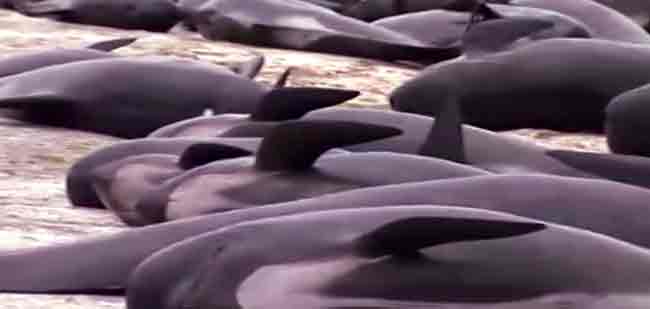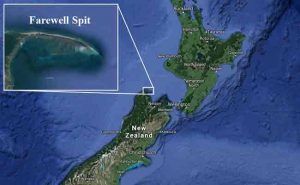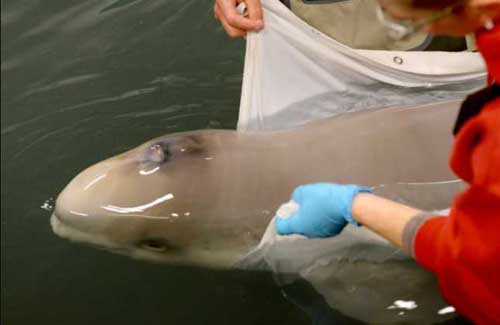
Farewell Spit on the northern tip of the south island of New Zealand, is once again living up to its name as it claims the lives of hundreds of Pilot Whales in one of the largest beachings in recent history.
In the last two days, well over 650 Pilot Whales have beached themselves along a portion of the 15- mile-long sliver of land that juts out into the Tasman Sea.
When over 400 whales were discovered beached on the spit on Friday, businesses and schools were called on to care for, and re-float the whales. Most of the Pilot Whales in the initial stranding were dead when they were found beached. About 100 of the surviving whales were refloated and a human chain was formed to keep the wayward whales from re-beaching.
Then Saturday, another pod of about 240 whales beached themselves. All of the whales in the second wave were not part of the initial beaching. Rescuers were able to ascertain this because they had tagged all of the whales that they refloated.
Thus far, about 335 whales have died, over 200 remain stranded but alive, and about 100 have been set back out to sea.

Farewell Spit is notorious for its whale beachings, and has been referred to as the “Whale Trap.” The spit, which stretches way off shore into the sea, has a very shallow sloping beach on the Golden Bay side that continues for miles into the water, making it very difficult for the whales to escape once they close on the shoreline.
There is no positive answer as to why the whales beach on the spit as often as they do, opinions span from currents, to chasing prey or protecting weak or sick members from predation.
This most recent stranding is the third-largest in history, with the largest being the 1918 event, where as many as 1,000 pilot whales stranded themselves. Before this stranding, a major one occurred in 1985, that year, as many as 450 whales beached near Auckland. At least 300 strandings are recorded in New Zealand each year.[xyz-ihs snippet=”Adsense-responsive”]



